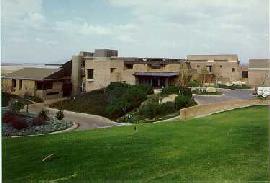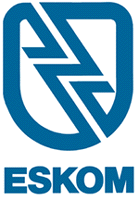The years of expansion and change - "Electricity for all"
This decade was the most mementous. While the country underwent massive political and social change, ESCOM itself was transforming too. In fact ESCOM’s leadership seemed to anticipate the direction the country was taking and made a very serious attempt to be part of that change – in effect, to change things from the inside.
Mr Jan H smith succeeded Dr R L Straszacker as Chairman of ESCOM in 1980 an launched an unprecedented expansion programme in the eighties. The planned erection of more giant power stations in the Transvaal and the Orange Free State (now known as the Free State) was announced.
In the early 1980s ESCOM planners were predicting electricity demand to grow at 7 to 8% a year. At that rate thanks to the nature of compounded growth you have to double capacity every decade or so. To meet the expected demand, ESCOM started plans on three large power stations, Matimba, Majuba and Kendal. Even though things were slowing down in the early 1980s. ESCOM Chairman Jan H Smith saw it as temporary and so carried on full steam ahead with building large power stations.
In 1983 matters reached a low point for ESCOM,, its power stations were running at an average availability of 72% and interruptions in supply were common place.
Consumers were becoming increasingly impatient with ESCOM which was seen as wasteful and unreliable. In May 1983, the government appointed a Commission of Inquiry (the De Villiers Commission) into “The Supply of Electricity in the Republic of South Africa”. At the time ESCOM had other things to worry about besides fending off attacks on in inner workings In 1983, South Africa was in the grip of a major drought. Power stations are thirsty animals, and at the time a unit of electricity used about two-and-a half liters of water. The KwaZulu-Natal power stations were affected as ere those that relied on the Vaal Dam. Of particular concern was the level of the Grootdraai Dam, which supplied water to Kriel and Matla power stations.
To get water to Grootdraai, an emergency plan wa hatched to pump water 200 km back up the Vaal River from the Vaal Dam to the Grootdraai Dam. To do so weirs were used to raise the level of the water, and new power lines had to be constructed to drive the pumps. The emergency plan (a joint effort between ESCOM and the Department of Water Affairs) worked, and disaster was averted. In October of 1983, heavy rains fell throughout the country and broke the drought.
But still the heat remained on ESCOM, with the De Villiers Commission starting to investigate matters relating to costs, planning and plant performance. ESCOM management decided to seek out their own expert advice. A firm of American consultants, Ernst & Whinney, did a study on ESCOM and concluded in a preliminary report, that the economics of electricity supply had indeed changed, but that ESCOM ought to still to stick to its original purpose of ensuring reliable supply for the country. The report did, however warn that the tariff report did, however, warn that the tariff increases necessary to keep supply going were “likely to lead to extreme customer discontent with resulting press and government action.” As is the case today, back in 1983, ESCOM was trying to balance its commitment to current customers with its commitment to the long-term security of the electricity system. However, economics change, technologies change, and environmental and social concerns undergo a revolution. Then, as now ESCOM had to take all these matters into account in plotting its next move.
In the late 1984, the government announced that it had received, and accepted, the recommendations of the De Villiers Commission, ESCOM was to be run by a two-tier structure, consisting of a board of control and a management board. It also revisited that old ESCOM chestnut “profit”. The Commission recommended that ESCOM recover in revenue 5% more than expected expenditure. It recommended that the idea of undertakings be done away with an that tariffs had to be more differentiated and cost effective.
In line with the recommendations the Cabinet announced the establishment of a board of control, which was to be known as the Electricity Council. It consisted of 15 people and included government bureaurcrates, independent experts, and representatives of consumer organisations were enacted.
In Britain, the 1980s are remembered for cheesy synth-pop music and Margaret Thatcher. In South Africa, Sipho Mchunu and Johnny Clegg helped break down racial barriers by forming a band called Juluka and singing about the mysterious “Scatterlings of Africa”. One man who was not listening was a certain Pieter Willem Botha. PW Botha was South Africa’s Prime Minister from 1978 to 1984 and then State President from 1984 to 1989. For all PW Botha’s sins as leader of a lost cause, he did at least confer to ESCOM the side appointment of John Maree. In 1985, John Maree took over as Chairman of the newly created Electricity Council. He did so on condition that he could be his own man and make his own decisions.
As per the recommendation of the De Villiers Commission, the Electricity Council was responsible for running ESCOM’s “day-to-day” affairs on sound business principles and within the guidelines, policy and objectives determined by the council.
PW Botha did well in choosing John Maree, a strong communicator and proven businessman as Chairman of the new Electricity Council. But in other matters, his judgement proved very faulty. In August of 1985, he was widely expected (including by his own Cabinet members) to announce the end of apartheid in a major policy speech. Instead of “crossing the Rubicon”, he warned the world (with that wagging finger) not to push us too far. The world did not listed and instead disinvested from the country, sending the Rand spiralling down and forcing the government to freeze foreign debt repayments.
Not for the first time, or the last for the matter, ESCOM had to try and fix a major problem that was not of its own making. As a major borrower of overseas capital, it was now under pressure to reduce expenditure. In some ways, it was good timing. The projected growth of 8% had not materialised, and ESCOM no longer need all the capital equipment it had ordered. Contracts were as far as possible, delayed or cancelled and capital expenditure was significantly reduced.
Meanwhile, John Maree put his much valued communication skills to work by going around the country and speaking to small groups of ESCOM managers. More correctly, he listened to the managers. Maree, who had started his professional life as a furniture salesman, knew that the best way to sell change was to convince employees that they were active participants in it. His discussions revealed that morale was low and that ESCOM was out of touch with the South African public. He made it his business to change the public’s perception of ESCOM. He made Ian McRae Chief Executive, and together, the two (Dubbed 1&J by some) formed a formidable tag team intent on turning ESCOM’s fortunes around.
A conference of ESCOM’s top leadership (the Top 30, as it became known) resulted in a mission: “To provide the means by which customers’ electricity needs are satisfied in the most cost effective way, subject to resource constrains and the national interest.” In all matters, ESCOM would be guided by a corporate strategy: “To develop ESCOM as a business that maximises the value of its products and services to South Africa.” John Maree was primarily a “numbers man” a very successful businessman who had studied commerce and believed that the numbers did not lie. He had taken up the job of leading ESCOM partly out of a sense of duty to country and partly because he loved a challenge. To him, ESCOM could combine the best of both worlds; it could drive efficiency and innovation by following strict business guidelines, and it could do so in the interests of nation building and national economic development. One set of numbers Maree did not like was the number of employees. When he took over there were 66 000 of them, and management had projected an increase to 72 000. Maree had a hunch (backed up by evidence no doubt) that ESCOM would be no less efficient with fewer people. By the end of 1986, he had reduced the staff compliment to 60 800 and by the early 1990’s he had got it down to 50 000.
Cutting number was just one way in which Maree was transforming the organisation. An equal Opportunity Committee was established in 1986 to investigate and remove discrimination (Eskom publication “Five Years On”). The organisation duly addressed itself to no fewer than had been identified as obstacles to becoming a non-discriminatory employer. ESCOM committed itself to the education and training of black entrants to the workforce and accepted the challenge of substantially increasing the number of black managers. Further, in line with the new policy of equip opportunities; all employees were put on unified salary scales.
Restructuring ESCOM along business lines was (as is still is) no simple matter. The answer back in the mid-1980s was to create “strategic business units (SBU’s) and separate them into three distinct categories: cost centres, profit centres and profitability centres. The difference between a profit centre and a profitability centre is that a profit centre manages revenues, costs and assets. In business, the customer is king, and ESCOM started becoming more customer focused. ESCOM’s transformation to a business took another leap in 1986 when legislation was introduced to scrap the “no profit, no loss” principle. In 1987, the Electricity Act was revised, and a new “Eskom Act” was published. ESCOM/EVKOM in Afrikaans) was renamed Eskom, and accounting practices were brought in line with standard business procedure. Eskom with its bold new Icon, was starting to look and feel like a brand.
With all the structural changes going on, one would be forgiven for thinking that Eskom (as it will now be called in these articles) had forgotten about building power stations. But things were progressing on that front, too. In April 1984, the first unit of Koeberg was synchronised onto the grid, and then unit 2 followed suit in 1985. Koeberg boasts that largest turbine generators in the Southern hemisphere and is also the southern-most nuclear power station in the world.
Given that the South African economy was slowing rather dramatically at the time, power generation itself was not the problem, and in fact Eskom had a surfeit of electricity. What it did not have was a robust economic environment to drive demand and take up the slack. In 1987, only 40% of the population (fewer than 13 million people) had access to electricity, and the vast majority of black people were without power. Eskom, under the guidance of Maree and McRae, reckoned that it could contribute to economic growth and social improvement by supplying electricity to the homes, businesses and clinics of millions of black South Africans. The challenge and excitement created by the need to meet that challenge were well summed up I n the Eskom slogan “electricity for all” which emerged in 1989 as the rallying call of an organisation that found renewed purpose.
In 1987 Eskom had adopted a policy that allowed it to use price incentives to attract new sales. One of the offshoots of the policy was to displace somewhat inefficient power generation at the major municipalities with Eskom power. The policy encouraged energy-incentive industries to flourish, most significantly in the Ferro-alloy and aluminium sectors. Out of this new market driven policies came the idea to develop sub-brands to promote electricity use in various fields. Agrelek helped farmers switch to electricity: Industrelek focussed on industrial applications: Elektro Wise promoted the safe use of electricity in townships and squatter camps: and Elektro Serve was dedicated to the service and hospitality industries. Utili-Mark targed bulk retailers, including municipalities.
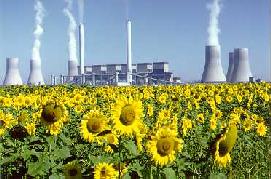
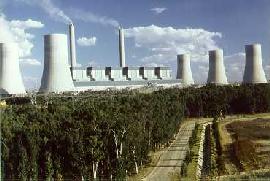
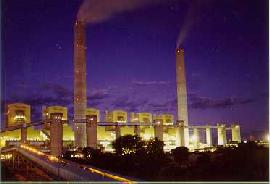
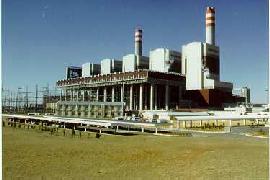
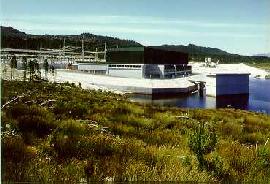
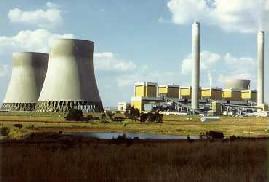
Tutuka, Lethabo, Matimba, Kendal and Majuba coal-fired power stations started to take shape in their respective locations. ESCOM announced that Palmiet, another pumped storage scheme, was to be built at Grabouw in the Western Cape. A comprehensive training college was built in Midrand, close to Johannesburg,
